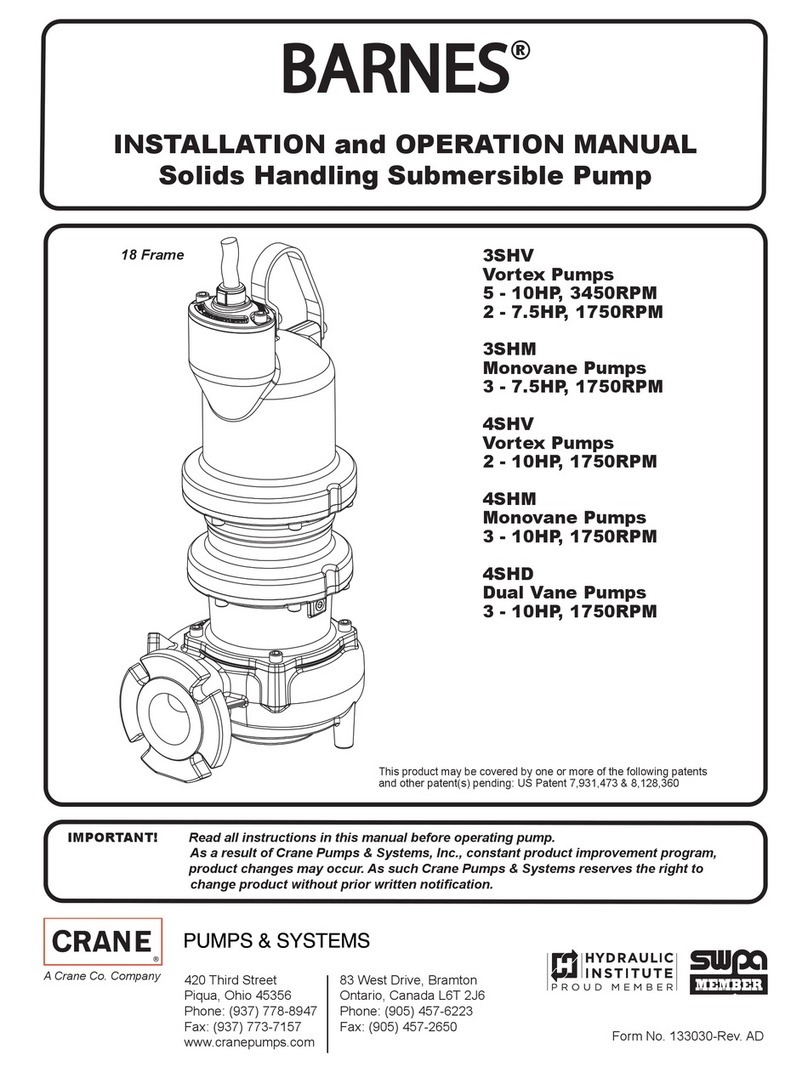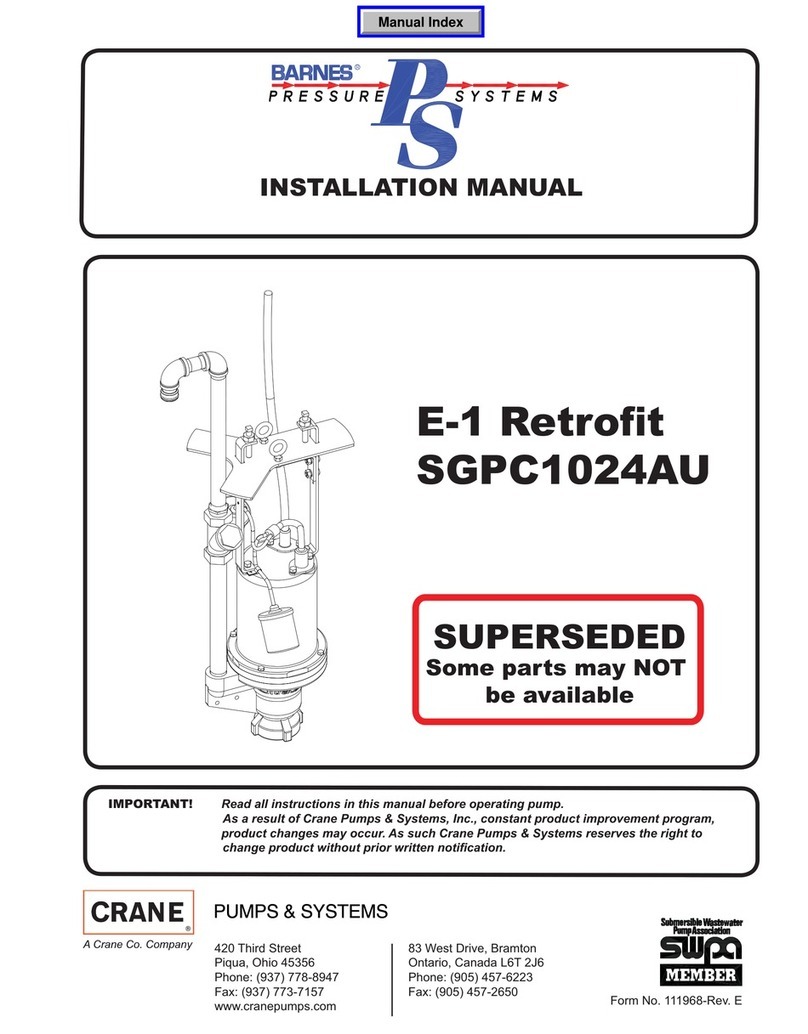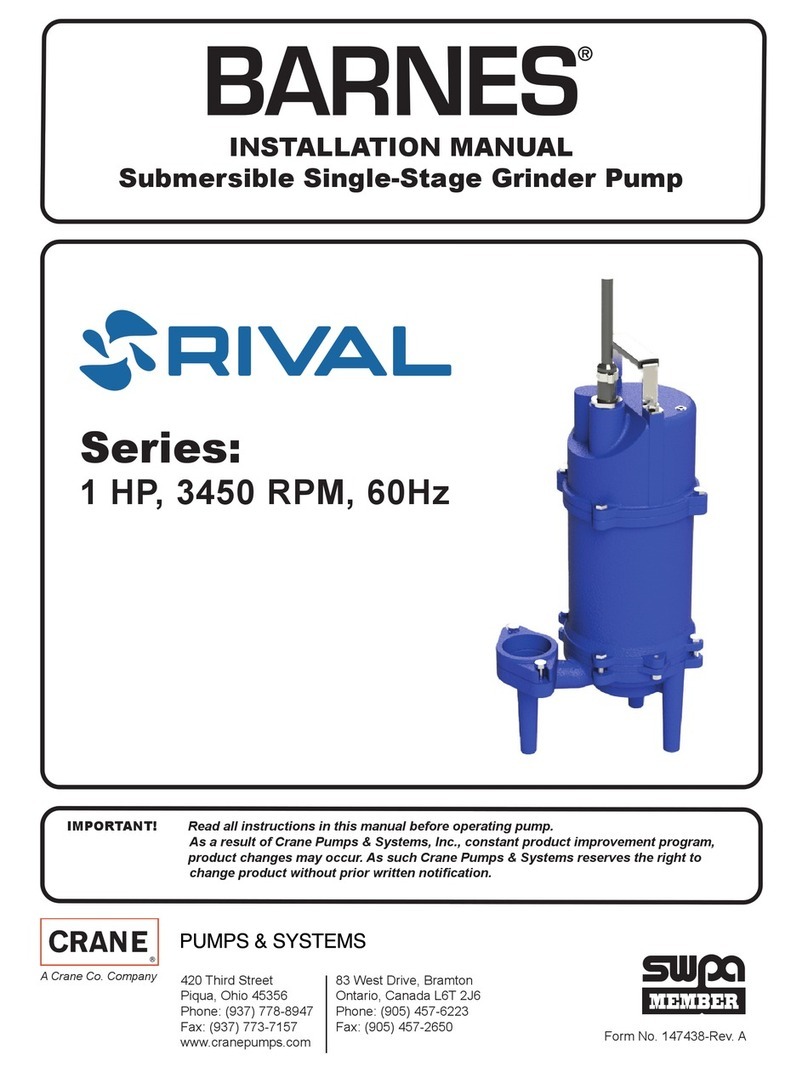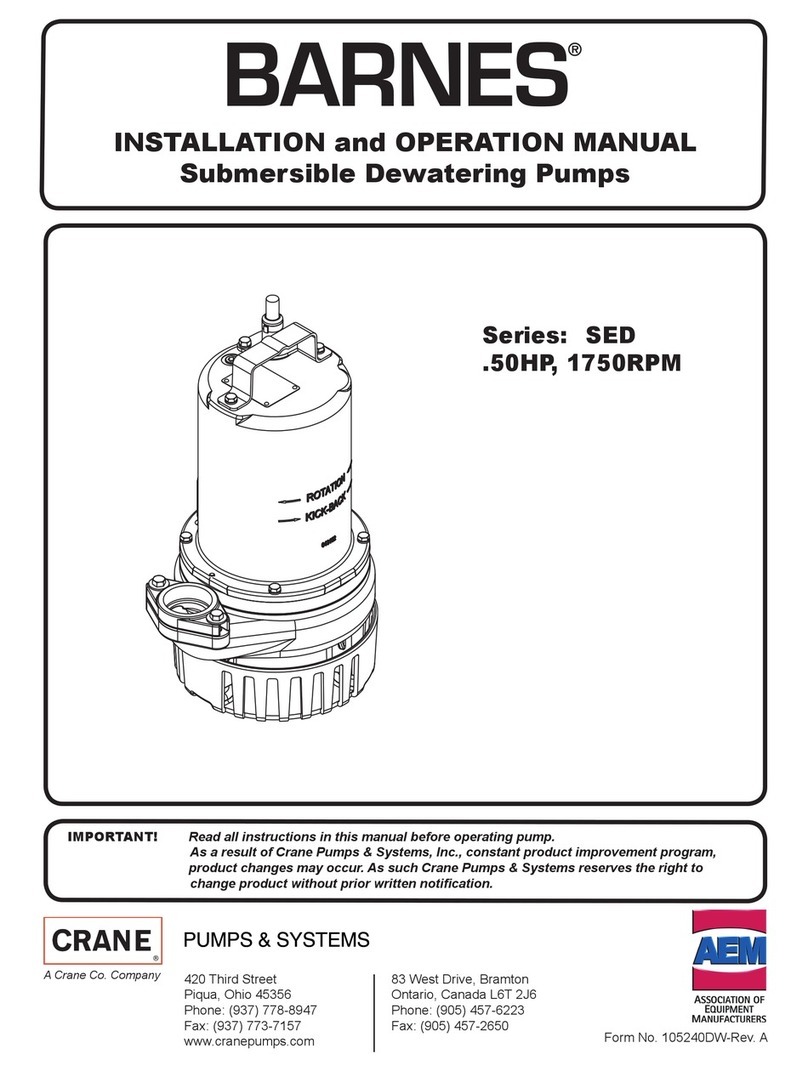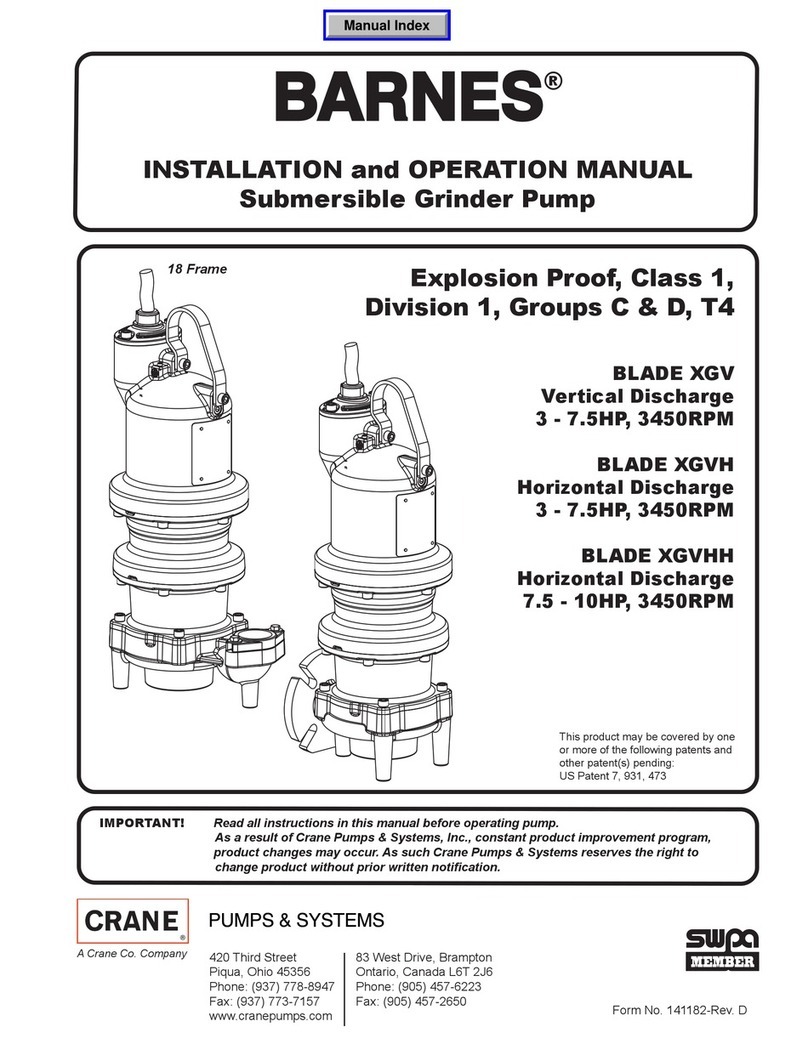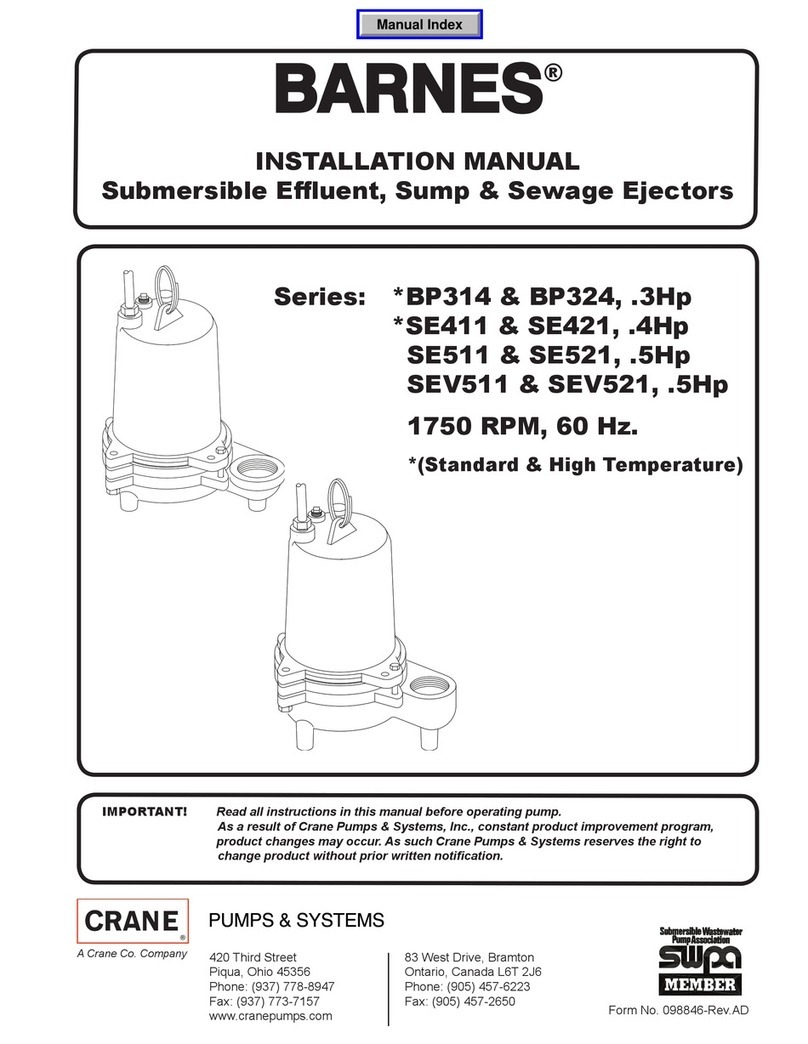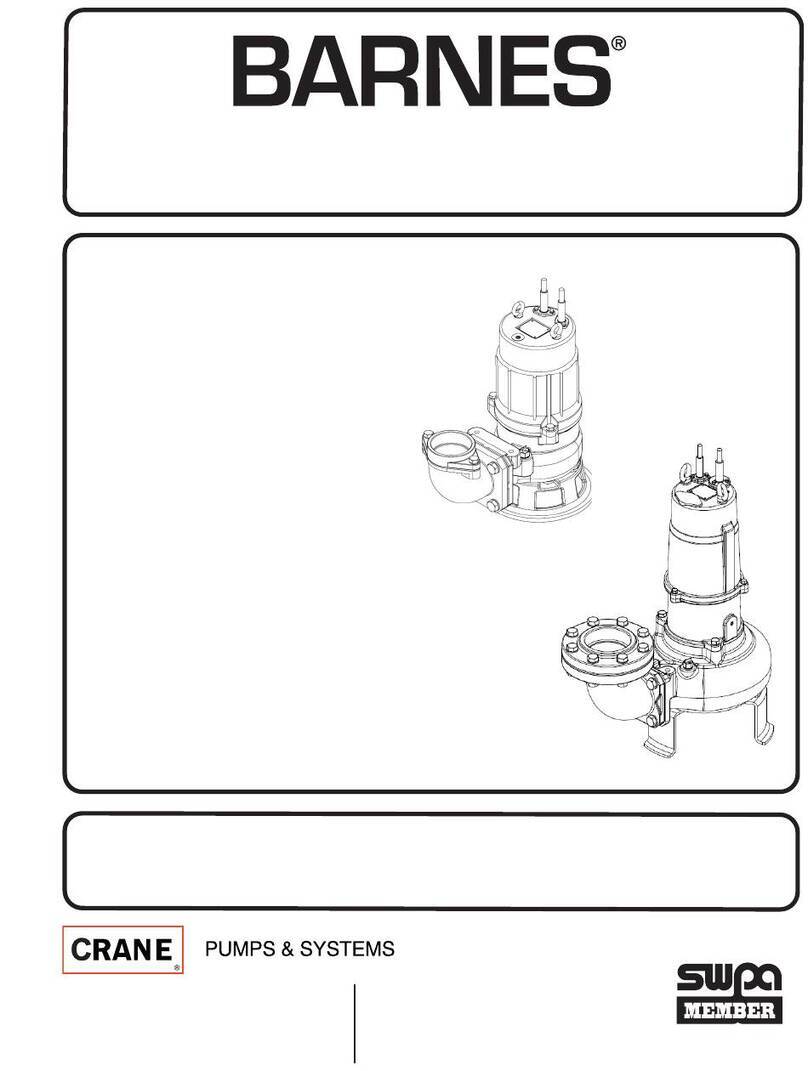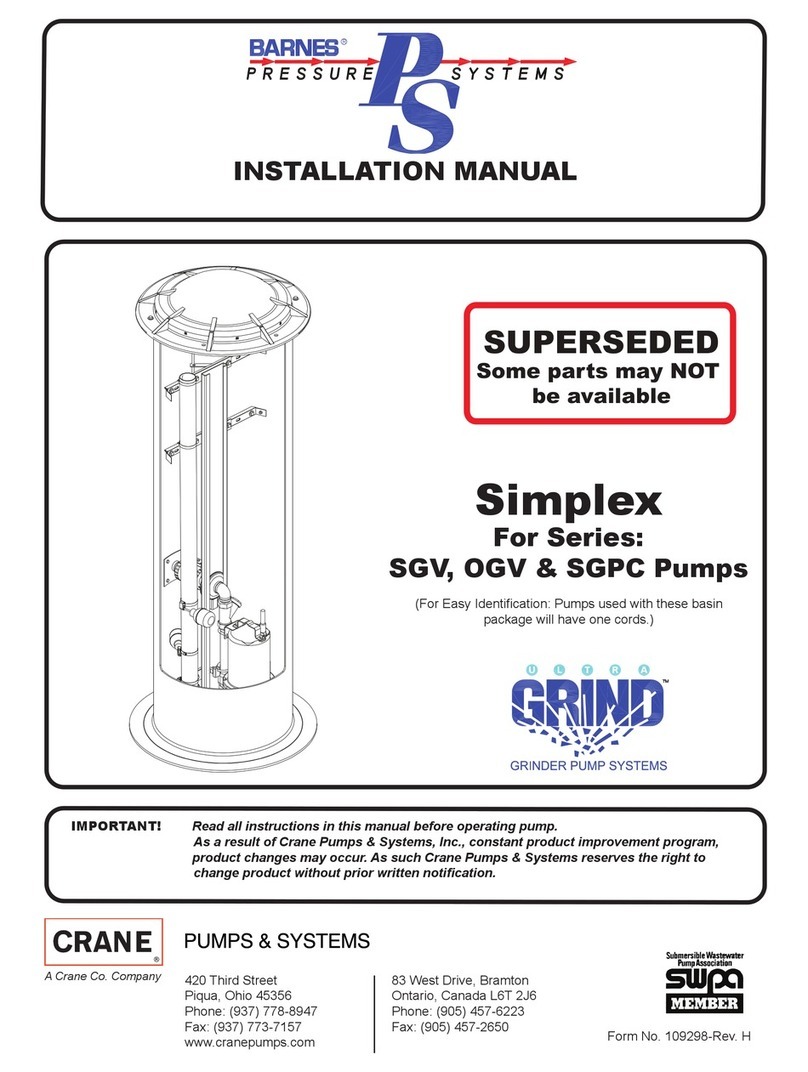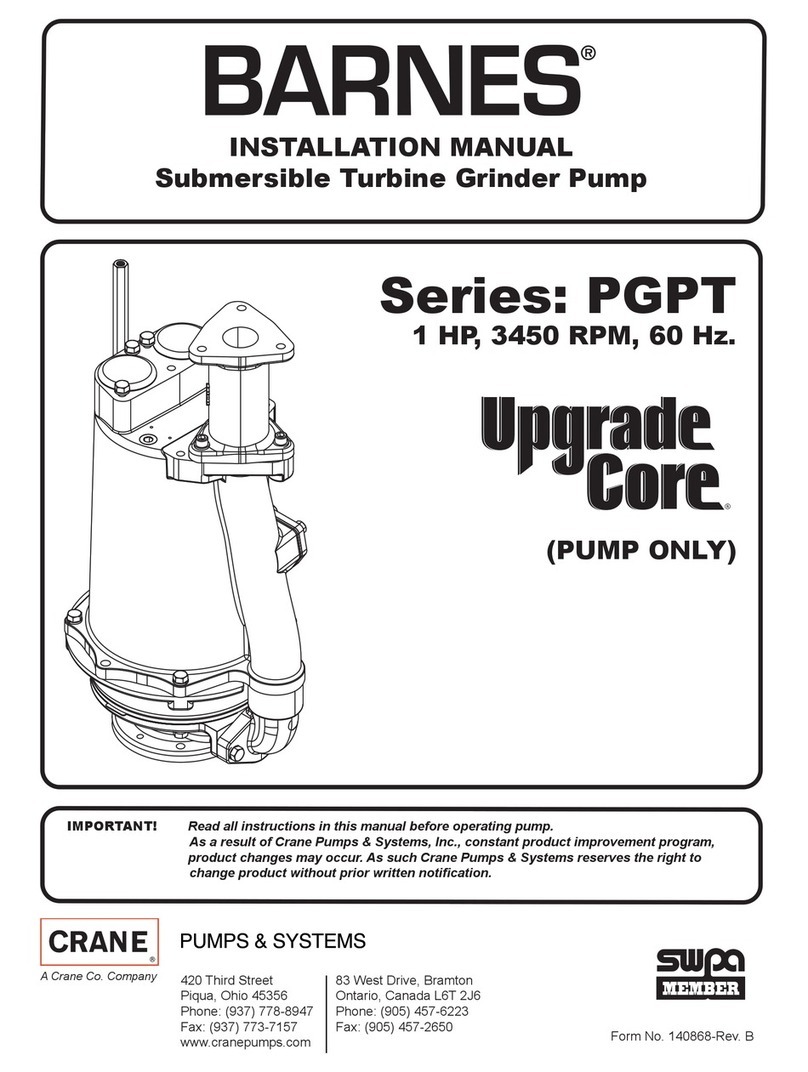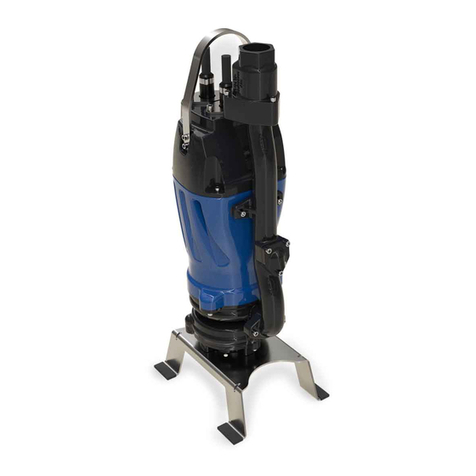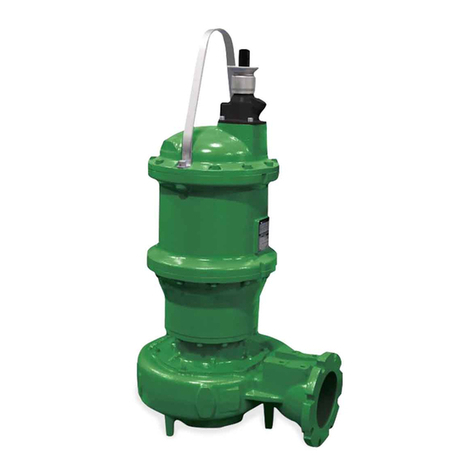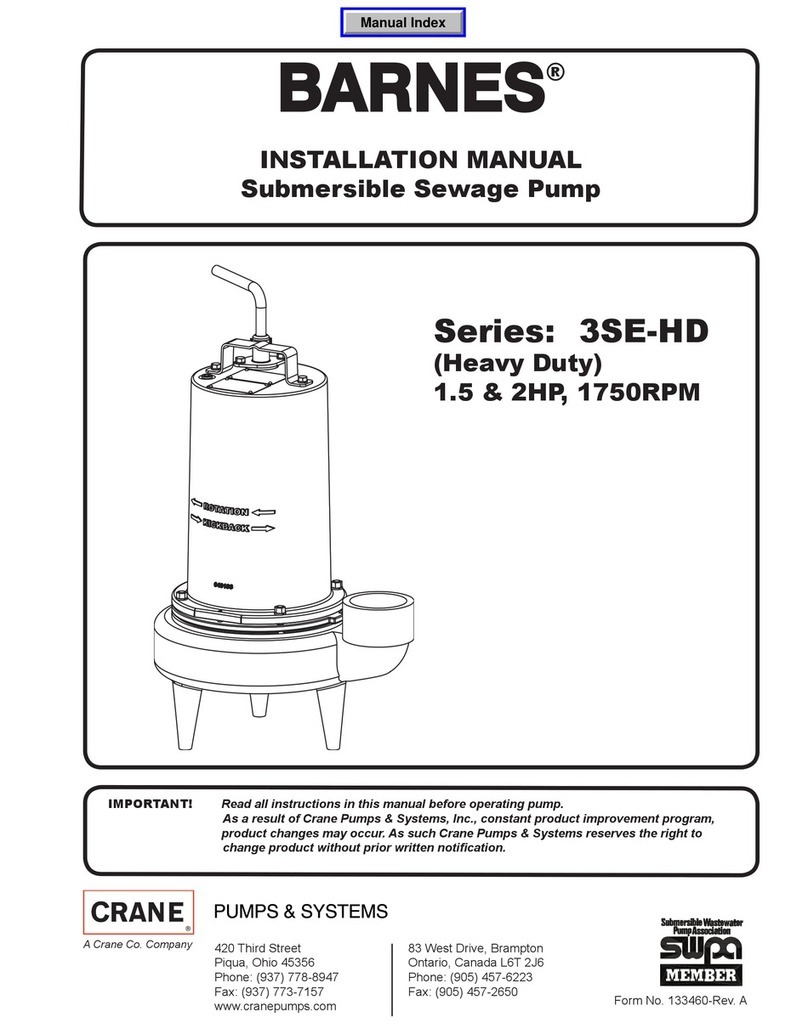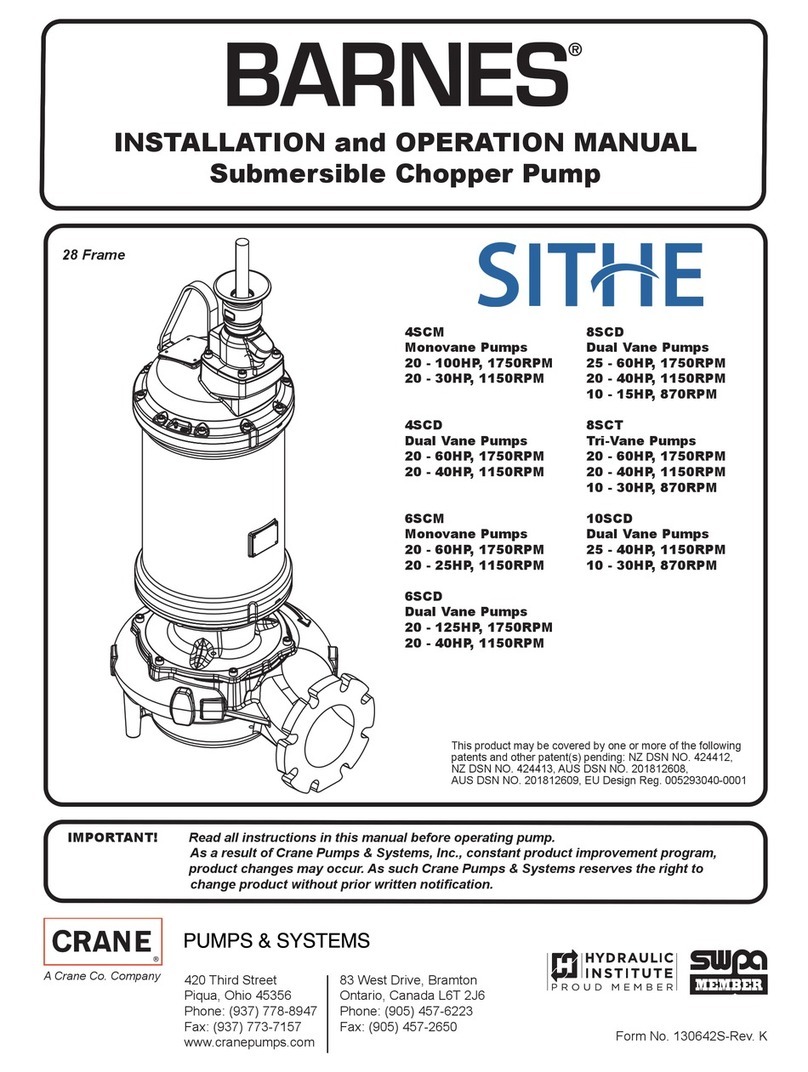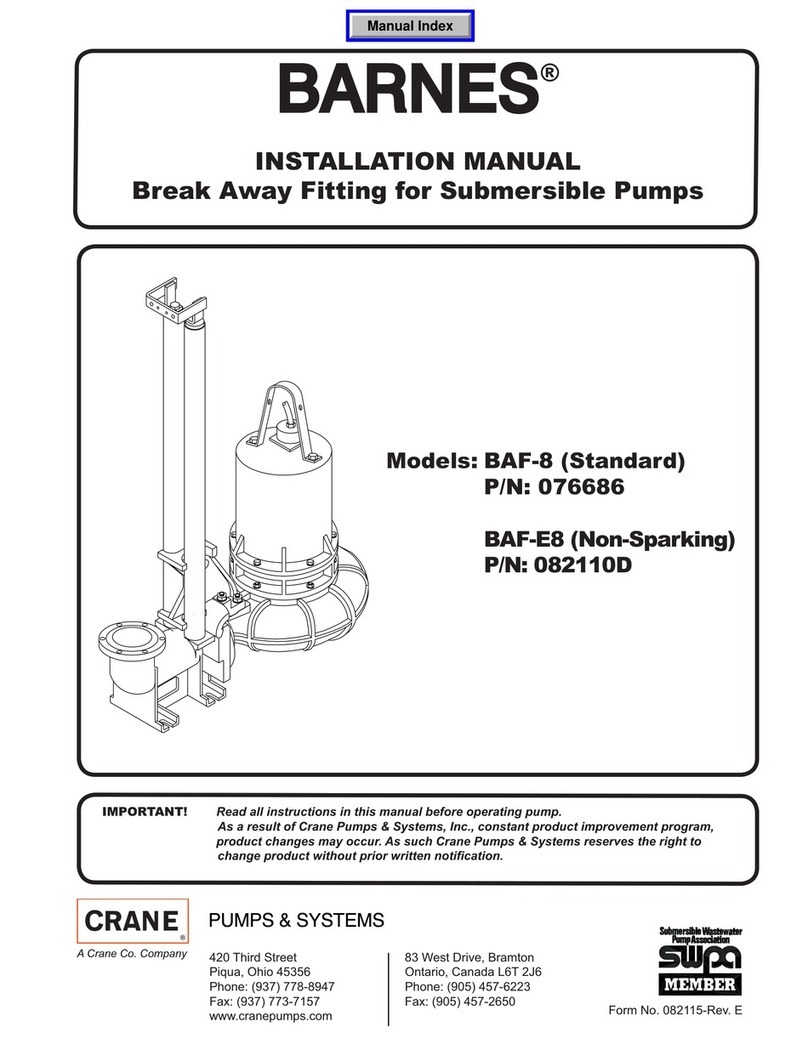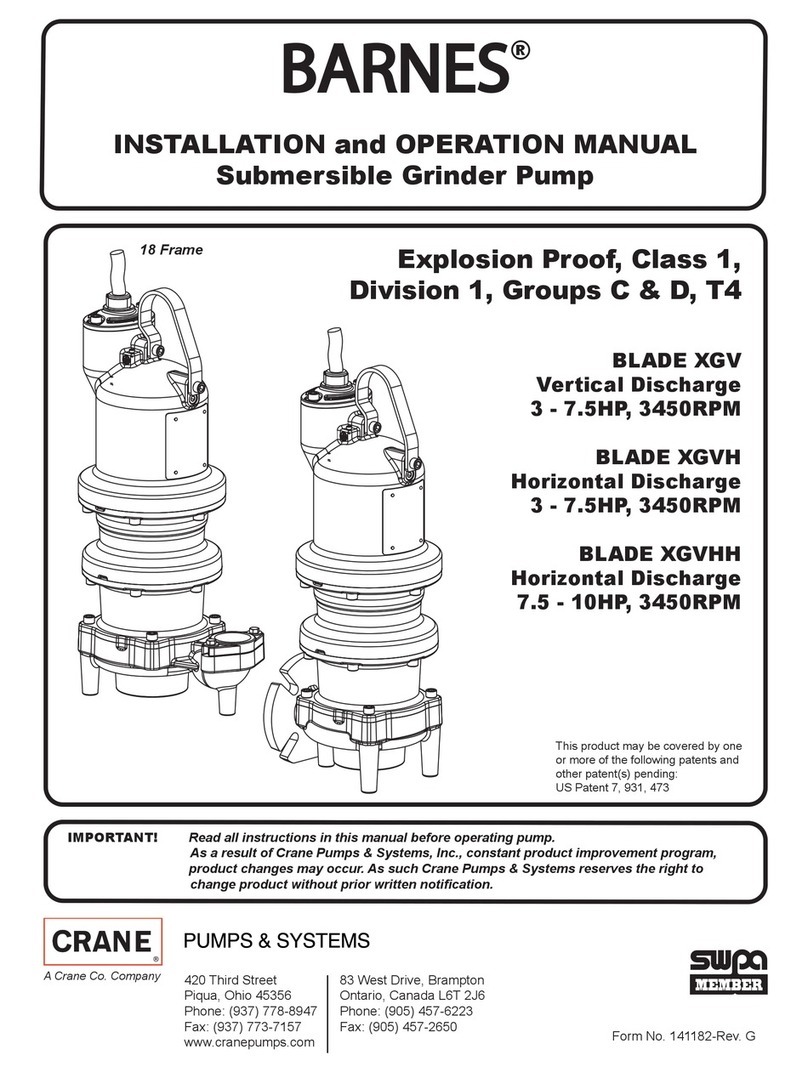
5
4. GROUTING
Grouting compensates for unevenness in the foundation
and prevents vibration and shifting after mounting is
complete. Build a form around the base plate to contain
the grout, and sprinkle area with water to obtain a good
bond. The base should be completely lled with a good
quality, non-shrinking grout. The usual mixture for grouting
is one part Portland cement and two parts sand with
sucient water to ow freely. It is also desirable to grout
the leveling pieces, shims or wedges in place. Foundation
bolts should be fully tightened when grout has hardened,
usually about 48 hours after pouring.
5. PIPING
The piping practices you follow will directly aect the
eciency and power consumption of your pump. Pay
particular attention to the seemingly insignicant details
involved in piping for they make the dierence between
a good and bad installation. BOTH THE SUCTION AND
DISCHARGE PIPING SHOULD BE INDEPENDENTLY
SUPPORTED NEAR THE PUMP. LIBERAL USE OF PIPE
HANGERS AND SUPPORT BLOCKS WILL PREVENT
EXCESSIVE STRAIN ON THE PUMP CASING AND ON
THE PIPE JOINTS.
PROPER PIPING ALIGNMENT IS ESSENTIAL BEFORE
CONNECTION IS MADE. PIPING ALIGNMENT SHOULD
NEVER BE ACHIEVED BY FORCE, THIS COULD
PRODUCE STRAIN ON THE PUMP CASING.
SUCTION PIPING
The illustrations on page 6 are oered as a help in
avoiding errors frequently made in suction piping, such as
abrupt changes in pipe size, the use of concentric reducer,
and the placing of an elbow in a horizontal plane next to
the suction nozzle of a single suction type of pump, etc.
The following are of equal importance and should be
carefully observed:
1. Never use pipe of a smaller size than the suction
connection of the pump. Usually, it is necessary
to use one pipe size larger, and sometimes several
sizes larger in order to avoid excessive frictional
loss with a resultant low NPSH available.
Select the size pipe necessary so that NPSHA
exceeds NPSHR by 3-5 feet.
When centrifugal pumps are operated with
insucient NPSHA, cavitation will occur, resulting in
noisy operation and damage to the pump.
2. The suction pipe, from the source of water supply,
should be laid with a gradual incline, not on a level,
toward the pump, with the highest point in the line
at the pump suction connection. If the pipe is level
and if there are any high points in the line which will
form air pockets the pump will not operate properly.
3. If conditions require the use of a foot valve and
strainer, the ow area of the foot valve should be
from 1-1/2 to 2 times the area of the suction pipe;
and the strainer should have a free-opening area
equal to 3 to 4 times the area of suction pipe.
Otherwise excessive frictional loss will result.
4. If a gate valve is used on the suction line to a
pump operating under a suction lift, the valve
stem should be placed in a horizontal plane, or a
vertical, downward position in order to avoid a
possible air leak.
5. The end of the suction pipe should always be
submerged a minimum of 18”. If only limited
submergence can be had, the end of pipe should
be belled or ared. A board oating on the surface
of water surrounding the suction pipe is be helpful
against the formation of a vortex permitting air to
enter the suction pipe.
6. On pumps operating under high suction lift, the
suction piping should be tested thoroughly for air
leaks. A small volume of air will materially reduce
the capacity of pump, and a larger volume will
frequently cause loss of prime.
7. Installations which will be subjected to considerable
temperature variation should be provided with some
means for compensating for expansion and
contraction. A 50° temperature change means
an expansion or contraction of approximately 3/8” in
a pipe line of 100ft. length. This will result in
distortion and misalignment of pump, and
sometimes actual breakage.
8. The pipe should not be pulled into position by
tightening the piping joints. The pipe should meet
the pump and the pump should not be required to
meet the pipe. All piping should be supported
indepently of the pump. Pumps are not designed for
carrying loads imposed by piping and its contents.
9. When installing, guard against the possibility of
foreign material such as nails, bolts or pieces of
waste being left in the line, likely to lodge in the
impeller and cause loss of capacity and mechanical
damage.
10. When the suction supply is taken from a tank or
sump, incoming water should never be allowed to
fall into the water near the end of suction pipe. This
will carry air down into the suction pipe.
SUCTION DIFFUSER FEATURES:
• Reduces both space and installation costs by replacing
an extended entry pipe, a long radius elbow and a
strainer.
• Disposable ne mesh start-up strainer provided on all
models, guarantees a clean system.
• Steel stabilizing vanes ensure smooth ow into the

